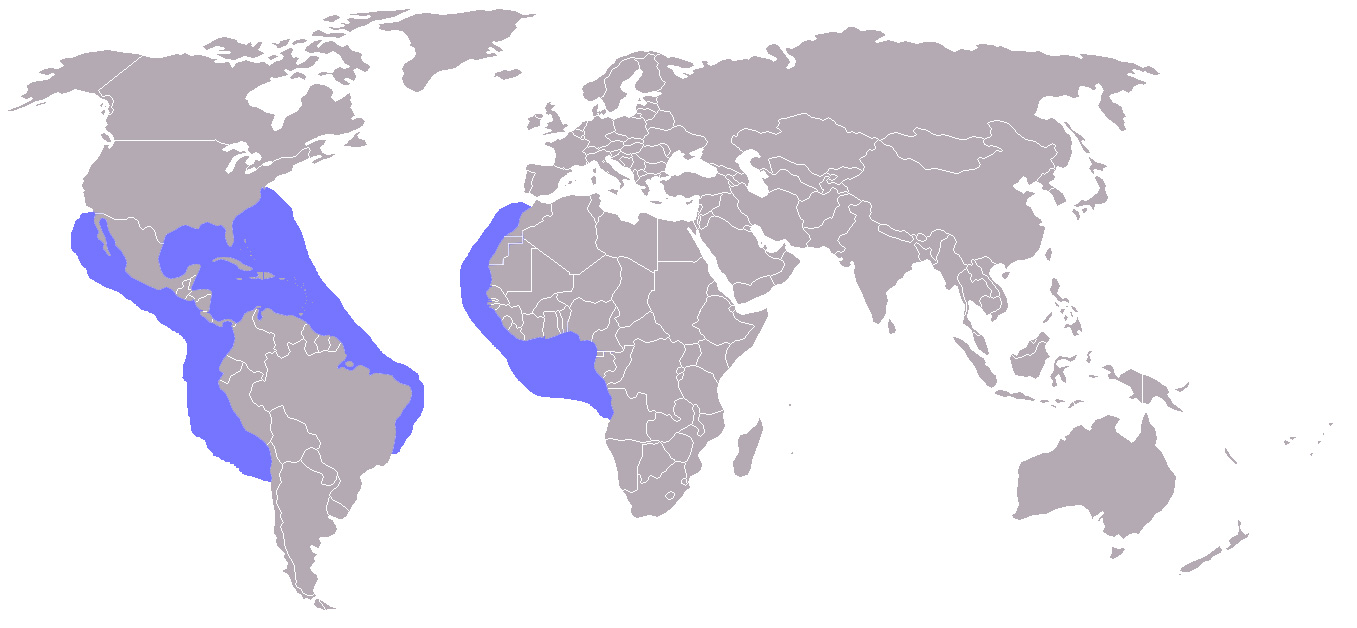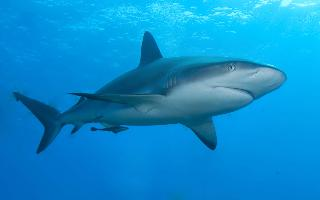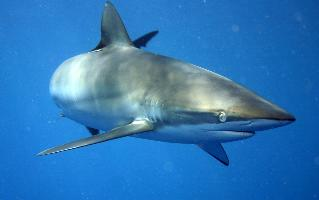
Descrierea animalului
The Lemon Shark (Negaprion brevirostris) is a distinctive species of shark, easily recognizable by its yellowish-brown or olive coloring, which provides excellent camouflage against sandy sea floors. This subtropical shark species belongs to the family Carcharhinidae, which includes other requiem sharks. Lemon sharks are named for their unique coloration, which is not only a means of camouflage but also a characteristic that has intrigued scientists and shark enthusiasts alike.Adult Lemon sharks can reach lengths of up to 10 feet (3 meters), though most individuals are found to be in the range of 8 to 9.5 feet (2.4 to 2.9 meters). They have a robust and stocky build with a broad, flattened snout and long pectoral fins, which aid in their maneuverability and contribute to their distinctive silhouette. Their dorsal fins are small relative to their body size, and they possess a powerful tail that enables them to swim swiftly in pursuit of prey or when avoiding predators.
The habitat of the Lemon shark is primarily in the coastal waters of the Atlantic and Pacific Oceans. They are commonly found in shallow bays, coral reefs, and mangroves, where they can easily hunt for food and find protection from larger predators. These areas also serve as nursery grounds where females give birth to their young. Lemon sharks have a preference for warm waters, making them prevalent in regions such as the Southeastern United States, the Gulf of Mexico, parts of the Caribbean, and along the coast of West Africa.
Lemon sharks are known for their social behavior, often found in groups which may help in hunting and provide some protection from predators. Their diet mainly consists of fish, crustaceans, and mollusks. They have well-developed senses, including acute vision that allows them to see in the murky waters of their coastal habitats. Additionally, like other sharks, they possess electroreceptors called ampullae of Lorenzini, enabling them to detect the electrical fields produced by potential prey.
Reproduction in Lemon sharks is viviparous, meaning they give birth to live young rather than laying eggs. Females have a gestation period of about 10 to 12 months and can give birth to litters ranging from 4 to 17 pups. The young sharks are born in shallow nursery areas, where they are protected from larger predators until they are big enough to venture into open waters.
Despite their intimidating appearance, Lemon sharks are not considered a significant threat to humans, with very few, if any, unprovoked attacks recorded. They are, however, vulnerable to human activities such as habitat destruction, pollution, and overfishing. The International Union for Conservation of Nature (IUCN) has listed the Lemon shark as Near Threatened, highlighting the need for conservation efforts to ensure the species' survival.
Research on Lemon sharks has contributed significantly to our understanding of shark behavior, physiology, and ecology. Studies conducted at places like the Bimini Shark Lab in the Bahamas have provided valuable insights into their social behavior, reproductive biology, and migration patterns, further emphasizing the importance of this species in marine ecosystems.
In summary, the Lemon Shark is a fascinating and important species within marine environments, known for its distinctive color, social behavior, and role in the ecosystem. Despite facing threats from human activities, ongoing research and conservation efforts aim to protect this unique species for future generations to appreciate and study.
Harta răspândirii

Animale similare
Fotografii noi cu animale
Top 10 animale
- Dolphin gull (Leucophaeus scoresbii)
- Diana monkey (Cercopithecus diana)
- Moustached guenon (Cercopithecus cephus)
- Greek tortoise (Testudo graeca)
- Stone loach (Barbatula barbatula)
- Galápagos tortoise (Geochelone nigra complex)
- Japanese macaque (Macaca fuscata)
- Russian tortoise (Testudo horsfieldii)
- Common flying dragon (Draco volans)
- Galápagos penguin (Spheniscus mendiculus)


